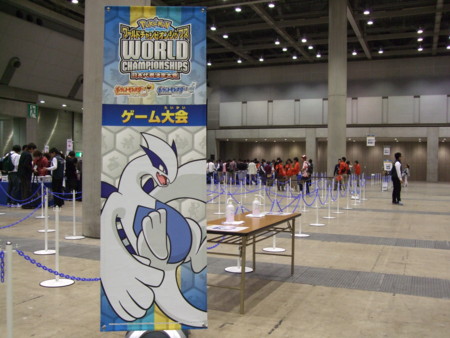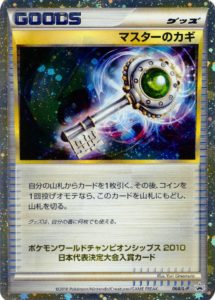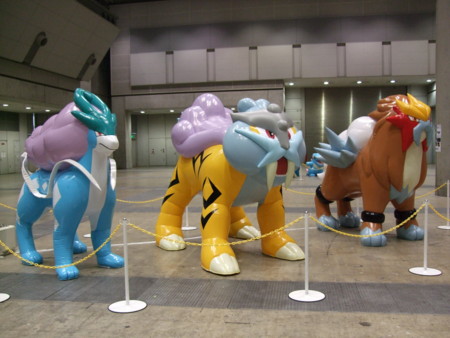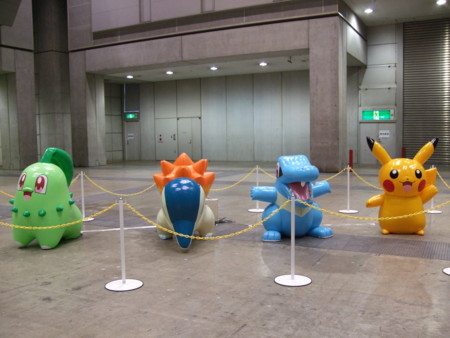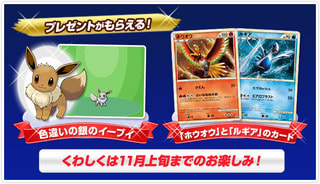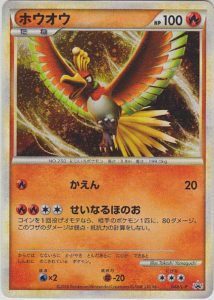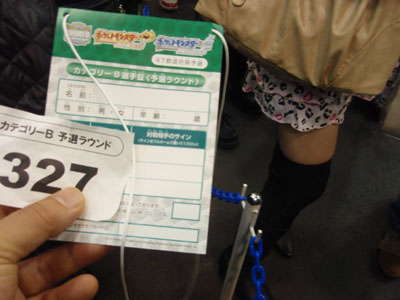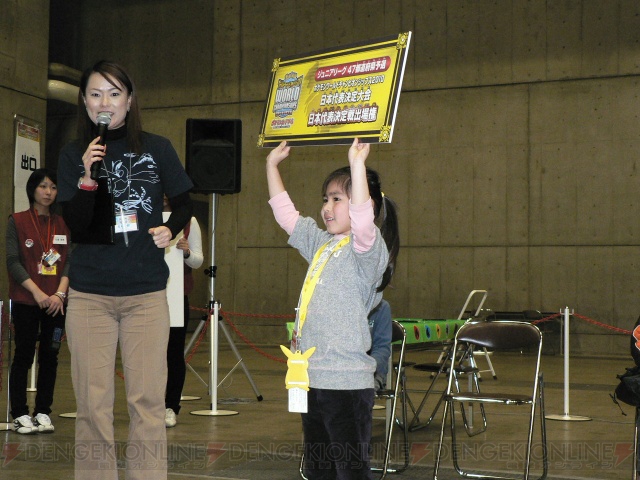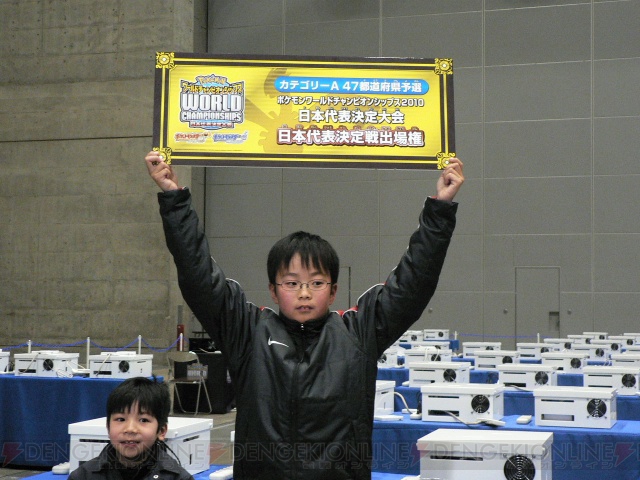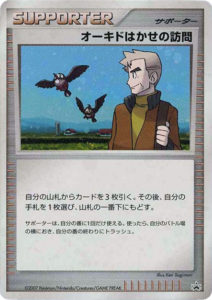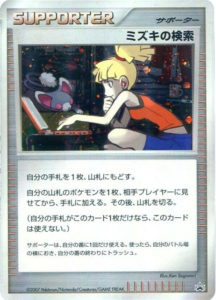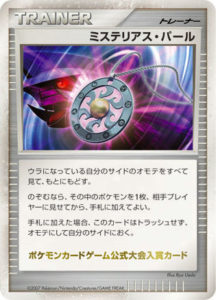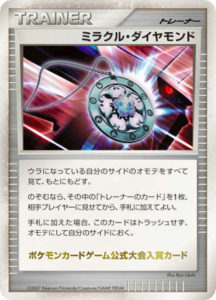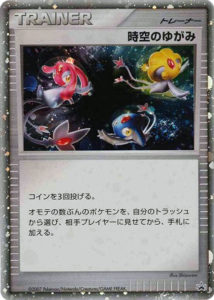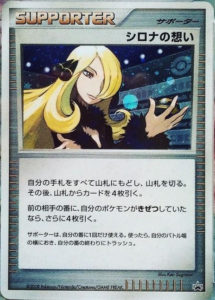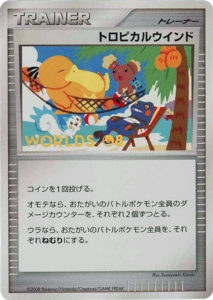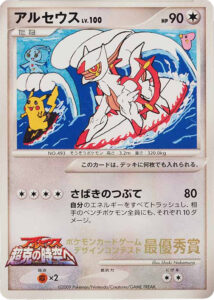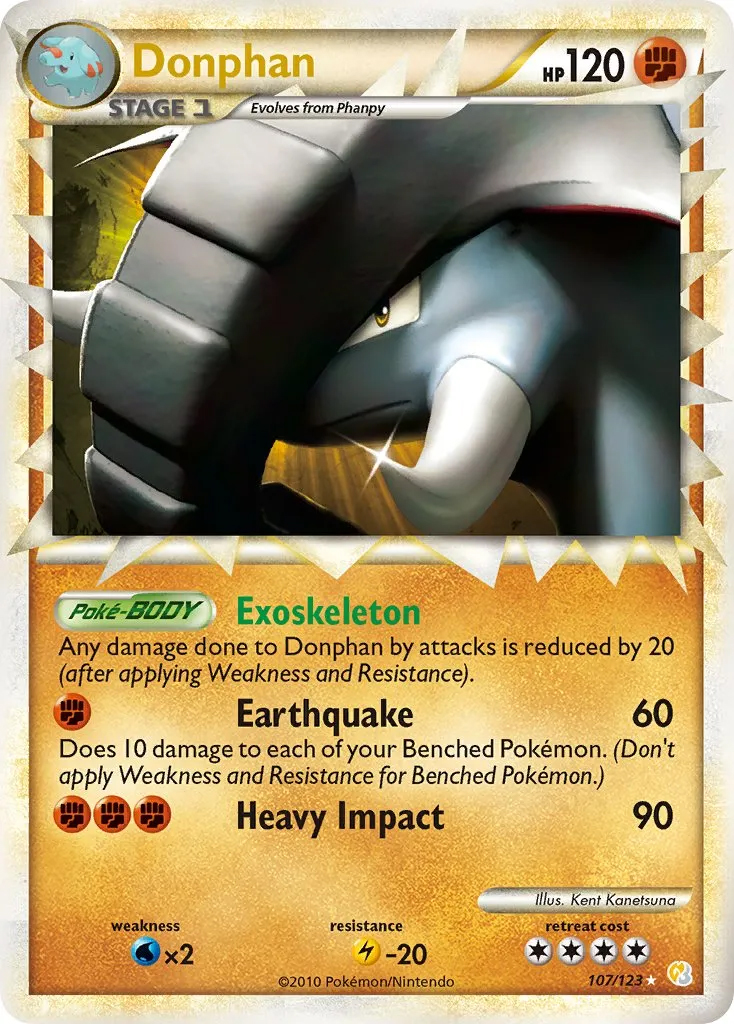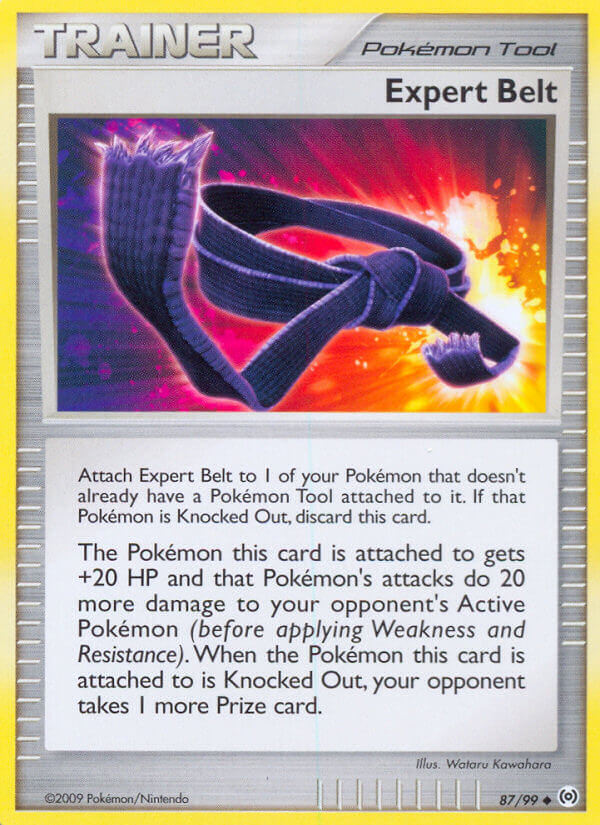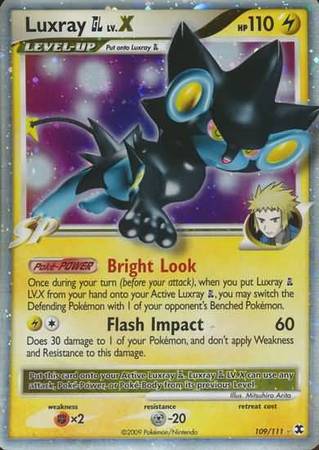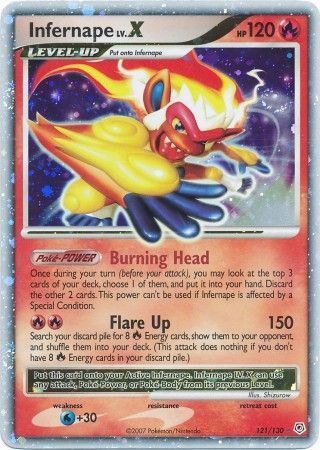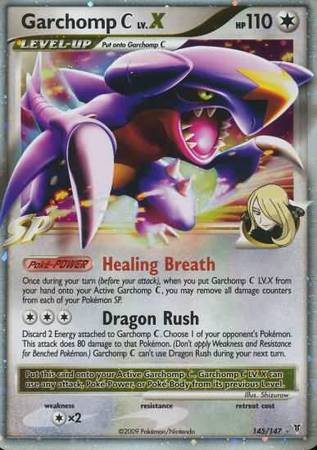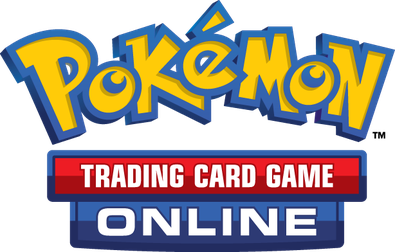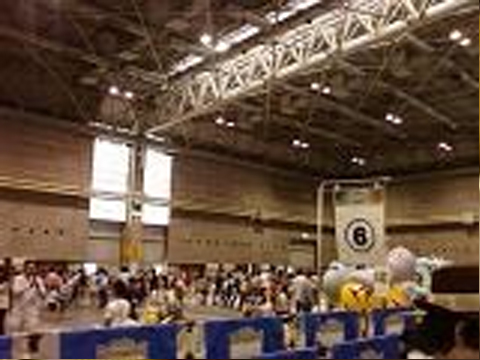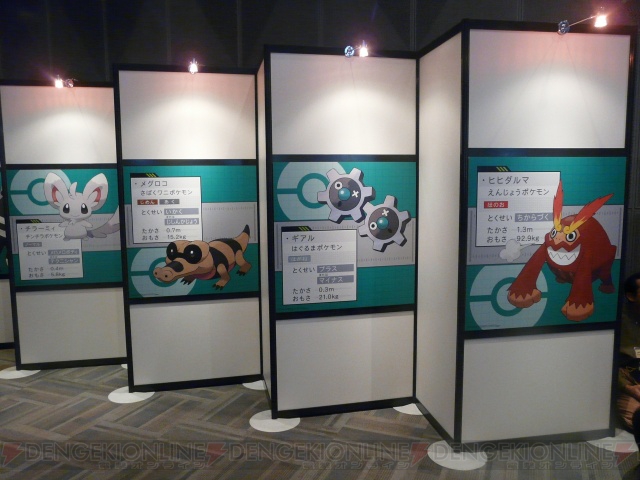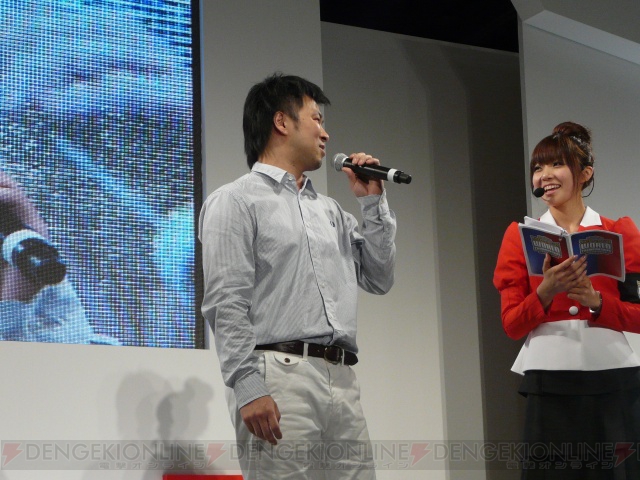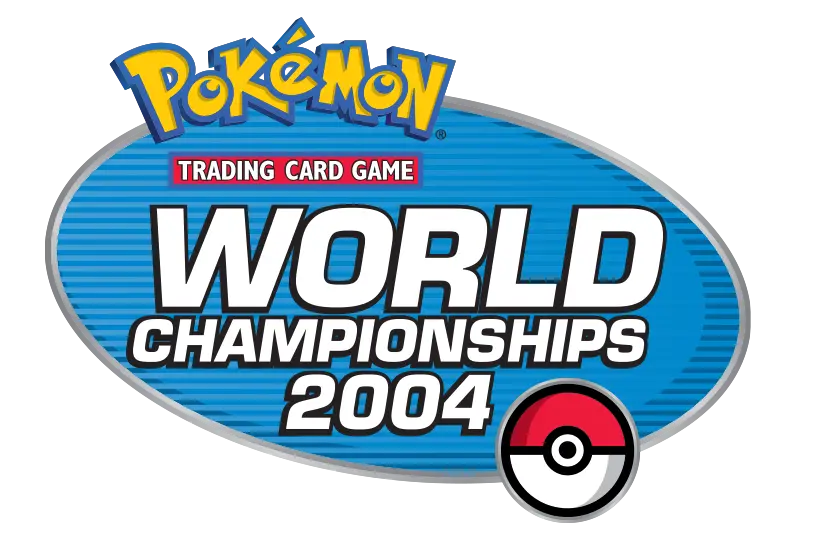Continuing from the previous year’s national championships event, the World Championship Representative Tournament series (World Champion Series or “WCS” for short) resumed in the fall of 2009. This year, they were themed after Ho-oh and Lugia to celebrate the Pokemon HeartGold and Pokemon SoulSilver games released in the same year.
Similar to the previous year’s WCS, the tournament series combined both the TCG and VGC (video game championships) at the same events.
As with the previous year, the tournament series started with regional tournaments in 47 prefectures, and would eventually end up with a final national championship in June 2010. Unlike the previous year, the regional tournaments were no longer split into a 1st and 2nd stage.
National finalists of these tournaments received the Master’s Key promo card. Both the TCG and VGC winners would receive a copy.
Qualifying Stage
The qualifying stage was held in 47 prefectures across Japan from November 6, 2009 to March 23, 2010. Venues were decorated with various Gen 2 Pokemon statues and graphics.
Participants of the qualifying stage tournaments each received 2 cosmos holofoil promo cards of the legendary Pokemon, Ho-oh and Lugia. A shiny Eevee was also given out to those who brought a copy of Pokemon HeartGold and Pokemon SoulSilver.
All TCG participants also received a double-sided playmat featuring Ho-Oh and Lugia.

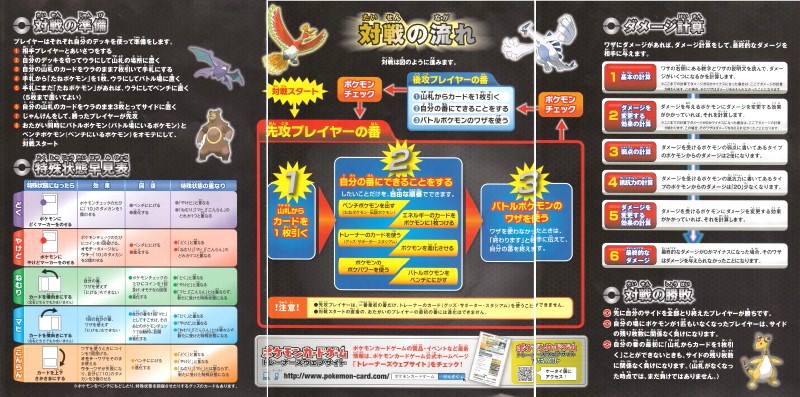
Entry
Players had to be members of the Pokemon Daisuki Club in order to participate. Players were selected by lottery for each of the prefectural tournaments.
The 47 prefectural tournaments were divided into 5 “reception periods”. During each of these reception periods, certain prefectures would be available to enter the lottery for.
1st reception period: November 6, 2009 – December 14, 2009
Aomori, Akita, Chiba, Shiga, Hyogo, Wakayama, Hiroshima, Fukuoka, Kumamoto
2nd reception period: December 4, 2009 – January 12, 2010
Yamanashi, Nagano, Ibaraki, Saitama, Tokyo A, Shizuoka, Nara, Oita, Okinawa
3rd reception period: December 25, 2009 – February 1, 2010
Iwate, Yamagata, Aichi, Okayama, Tokushima, Ehime, Miyazaki
4th reception period: January 15, 2010 – February 22, 2010
Miyagi, Niigata, Toyama, Ishikawa, Tochigi, Gifu, Mie, Osaka, Tottori, Shimane, Kagawa, Kochi, Saga, Kagoshima
5th reception period: February 15, 2010 – March 23, 2010
Hokkaido, Fukushima, Fukui, Gunma, Tokyo B, Kanagawa, Kyoto, Yamaguchi, Nagasaki
Tournament Structure
Similar to previous official tournaments, players were split into junior, senior, or masters league depending on their age:
- Junior League: Born after 1999
- Senior League: Born 1995 – 1998
- Master League: Born before 1994
This tournament was divided into 2 parts: the qualifying round and the final tournament. Junior league players would play both the qualifying and final rounds with 30-card half decks and 3 prizes. Senior and master league players would play both with full 60-card decks and 6 prizes.
Qualifying Round
Similar to the previous year, the qualifying round was held as a “Round” battle. Players started at the first round, and winning that round would move them to the next round, while losing would reset them to the first round. If there was a tie, it would count as both players losing.
Winning in the final round would earn players entry into the final tournament. Games during the qualifying round had no time limit, but since players could re-queue up to progress through the stages, fast play was incentivized. The qualifying round would end when all the slots for players in the final tournament had been filled at each venue.
Final Tournament
Similar to final tournaments in previous years, this was a single-elimination tournament between all the players who had made it through the previous qualifying round. Games had a time limit of 20 minutes, and increase from the 15 minutes of the previous year.
Winners of this tournament would be awarded with entry into the National Championships match.
Allowed Cards
Cards from the previous year’s DP and DPt expansions were all legal, along with new cards from the LEGEND expansions released alongside the Pokemon HeartGold and Pokemon SoulSilver games.
Expansions:
- Diamond & Pearl (Diamond Collection and Pearl Collection)
- Mysterious Treasures (Secret of the Lakes)
- Secret Wonders (Shining Darkness)
- Great Encounters (Moonlit Pursuit and Dawn Dash)
- Majestic Dawn (Moonlit Pursuit and Dawn Dash)
- Legends Awakened (Cry from the Mysterious and Temple of Anger)
- Stormfront (Fierce Battle in the Destroyed Sky)
- Platinum (Galactic’s Conquest)
- Rising Rivals (Bonds to the End of Time)
- Supreme Victors (Beat of the Frontier)
- Arceus (Advent of Arceus)
- HeartGold & SoulSilver (HeartGold Collection and SoulSilver Collection)
Preconstructed Decks / Special sets
- Pokemon card game LEGEND Random Basic Pack
- DPt-marked Entry packs
- Gift Box Preconstructed decks
- Random Construction Starter Decks
- DP-marked Construction half decks
- DP-marked Competitive Starter decks
- DP-marked Construction standard decks
- Battle Starter pack “Heatran vs. Regigigas”
- Movie 10th Anniversary Premium Set
- Movie release commemorative premium sheet 2008
- DP-P promo cards
- DPt-P promo cards
- L-P promo cards
- PPP promo cards
Additionally, the following unnumbered promo cards (and all variants of Pokemon Pal City) were allowed for play. This year added all variants of the Spiky-eared Pichus and Arceus cards from the 2009 Illustration contests.
Metagame
Two cards that had just been printed in the HeartGold & SoulSilver Collection sets changed the metagame from the previous year: Donphan Prime and Jumpluff. Both featured powerful attacks that could be used with a single energy. These were combined with the Expert Belt Trainer card to create powerful attackers that required little investment to get going.
Decks from the previous year’s metagame were still quite prevalent, with Luxray GL Lv.X, Infernape Lv. X, and Garchomp C Lv. X decks still being played.
Pokemon TCG Online Qualifier
With the release of the Pokemon TCG Online (PTCGO) game on March 24, 2011, players were also able to qualify for the national championships match via the online client for the first time ever.
It is unknown how many players qualified for the final stage via this method.
Last Challenge Qualifier
The Last Challenge Qualifier returned from the previous year, but this time was held as a separate tournament alongside the 47 prefectural qualifying tournaments.
This tournament allowed one final chance for players who had previously lost in the prefectural qualifying tournaments to win a chance to advance to the national championships. Two Last Challenge Qualifier tournaments were held: one for the Eastern prefectures of Japan, and a second for the Western prefectures.
Unlike the prefectural tournaments, players in the Last Challenge Qualifier tournaments did not receive either of the Lugia / Ho-Oh participation promos or Shiny Eevee Pokemon.
Entry
Players had to enter a lottery to get a chance to play in the Last Challenge Qualifier. This lottery was open from May 10 – 17, 2010, after the 47 prefectural tournaments had concluded.
The West Japan tournament was held on May 30, 2010 at the INTEX Osaka in Osaka. It represented the following prefectures: Shiga prefecture, Kyoto prefecture, Osaka prefecture, Hyogo prefecture, Nara prefecture, Wakayama prefecture, Tottori prefecture, Shimane prefecture, Okayama prefecture, Hiroshima prefecture, Yamaguchi prefecture, Tokushima prefecture, Kagawa prefecture, Ehime prefecture, Kochi prefecture, Fukuoka prefecture, Saga prefecture, Nagasaki prefecture, Kumamoto prefecture, Oita prefecture, Miyazaki prefecture, Kagoshima prefecture, and Okinawa prefecture.
The East Japan tournament was held on June 6, 2010 at the Pacifico Yokohama in Kanagawa. It represented the following prefectures: Hokkaido, Aomori prefecture, Iwate prefecture, Miyagi prefecture, Akita prefecture, Yamagata prefecture, Fukushima prefecture, Niigata prefecture, Ibaraki prefecture, Gunma prefecture, Tochigi prefecture, Saitama prefecture, Chiba prefecture, Tokyo Metropolitan area, Kanagawa prefecture, Yamanashi prefecture, Nagano prefecture Toyama prefecture, Ishikawa prefecture, Fukui prefecture, Gifu prefecture, Shizuoka prefecture, Aichi prefecture, and Mie prefecture.
Final Stage
The Japan National Championship was held at the Tokyo Dome City Prism hall in Tokyo on June 20, 2010. There, the both the video game and TCG winners of the 2nd Stage would play to determine national champions.
The venue’s tournament area was themed after the Pokemon HeartGold and Pokemon SoulSilver games as that was the newest title, but the rest of the venue was decorated to promote the upcoming Gen 5 Pokemon Black and Pokemon White games, releasing later in the year in September 2010.
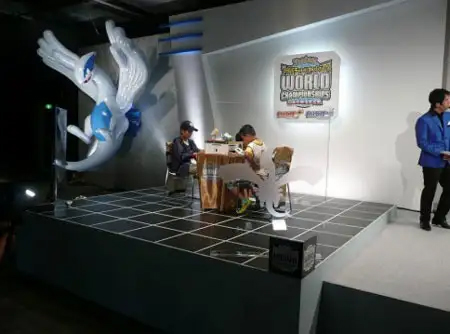
This stage of the tournament is what awarded the Master’s Key trophy card. Each of the winners for both the VGC and TCG would receive one.
Tournament Structure
Because both video game players and TCG players received the Master’s Key card, it is necessary to count them all to determine the total population.
TCG Final Stage Tournament Structure
The TCG tournament was again split into 3 age divisions:
- Junior League: Born after 1999
- Senior League: Born 1995 – 1998
- Master League: Born before 1994
The TCG’s Final Stage used the same “Swiss Draw” system as the 2nd Stage tournaments. This is a non-elimination tournament where there was a fixed number of rounds. Each player would be paired against another player with a similar record, and players would get points depending on the results (likely 2 points for a win, 1 point for a draw, and 0 for a loss).
VGC Final Stage Tournament Structure
The video game championships (VGC) players were also split into 2 groups based on age:
- Category A: Born after January 1, 1998
- Category B: Born before December 31, 1997
The VGC tournament was played on Pokemon HeartGold and Pokemon SoulSilver games, and utilized the “Double Battle” format. All participants were divided into 4 groups and competed in a Swiss Draw tournament. The top 8 players in each category A or B would participate in the finals.
Winners
In total, 36 Master’s Keys were officially distributed to winners of the TCG and VGC. They were distributed in acrylic plaques that denoted their placement and which game (TCG or VGC) they were won from.
The TCG plaque were red in color, while the VGC ones were blue, which was reversed from 2009’s Wonder Platinum plaques. The plaques also feature a hexagonal pattern with silhouettes of Pokémon in each hexagon.
The TCG tournament produced 8 Junior League, 6 Senior League, and 6 Master League winners for a total of 20 winners. The VGC tournament produced 8 Category A winners and 8 Category B winners.
The TCG tournament’s top 3 winners in each age division and top 4 winners of each VGC category were brought onto the main stage to receive their prizes. Atsushi Nagashima, Creature Inc.’s Pokemon TCG Director presented the TCG winner awards. Shigeki Morimoto, Game Freak’s director of the Pokemon HeartGold and Pokemon SoulSilver games presented the VGC winner awards.
In addition to their trophy plaques containing the Master’s Key promo, their also received a copy of the newest Pokemon titles, Pokemon Black and Pokemon White. These were represented by large oversized box covers.
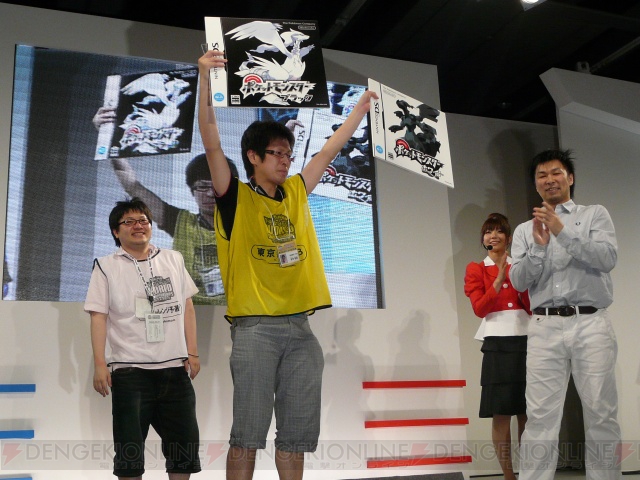
Winners would receive invites to represent Japan at the 2010 World Championships, which was held at Hawaii in the United States from August 13 to 15, 2010.
Legacy
The WCS 2010 tournaments were the last WCS tournaments for quite a few years. WCS 2011 was planned, but was unfortunately cancelled entirely due to the 2011 Tōhoku earthquake and tsunami. In 2012, the WCS event would be replaced by the Battle Carnival events of 2012. However, the WCS would eventually resume in 2015.
Sources
- https://web.archive.org/web/20091013104608/http://www.pokemon.co.jp/special/wcs0910/site/
- https://web.archive.org/web/20090914051218/http://www.pokemon.co.jp/special/wcs0910
- https://web.archive.org/web/20091012111454/http://www.pokemon.co.jp/special/wcs0910/card/reg01.html
- https://web.archive.org/web/20091012081016/http://www.pokemon.co.jp/special/wcs0910/card/reg02.html
- https://web.archive.org/web/20100428071317/http://www.pokemon.co.jp/special/wcs0910/challenge/index.html
- https://web.archive.org/web/20100429214912/http://www.pokemon.co.jp/special/wcs0910/report/1st
- https://web.archive.org/web/20101219160107/http://www.pokemon.co.jp/special/wcs0910/report/final
- http://narldiary.blog.jp/archives/cat_18367.html
- https://asami-1120.hatenablog.com/entry/20100508/p1
- https://game.watch.impress.co.jp/docs/news/326905.html
- https://dengekionline.com/elem/000/000/227/227507/#eid227512
- https://dengekionline.com/elem/000/000/273/273087/index-3.html#eid273162
- https://pokemorning.blog.fc2.com/blog-entry-317.html
- https://web.archive.org/web/20101218153857/http://kaihatsu1.creatures.co.jp:80/2010/06/






